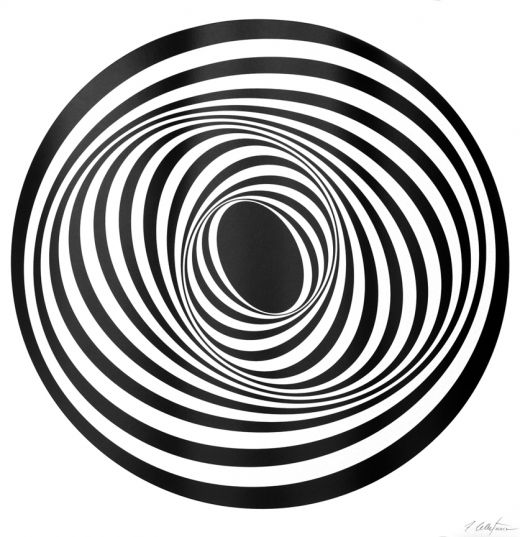Francis Celentano is one of the original Op Art pioneers who was featured in the cutting edge exhibition that is credited with bringing the Op Art movement to the mainstream – the famous “Responsive Eye” exhibition held at New York’s Museum of Modern Art in 1965 – where his work was shown alongside work by Bridget Riley and other key artists of the movement.



Francis’s work has been collected by (amongst others) the Museum of Modern Art, the Whitney Museum of Contemporary Art, The Albright-Knox Gallery, The Museum of Contemporary Art in Buenos Aires and The Seattle Art Museum. He is currently represented by the Loretta Howard Gallery in New York and the Laura Russo Gallery in Portland, Oregon.



We are absolutely honoured to be able to feature Francis’s work on the site.
Did you study art? If so, where?
I took elective courses in drawing and painting in Undergraduate school at New York University. My studies were predominantly in the history of art in graduate and undergraduate school at New York University. In the 1950’s in New York when I started painting I was encouraged by ideas I shared with contemporary artists as well as exhibitions of avant-garde art. A Fulbright gave me a year in Rome in 1957-58 which was also important in the direction my art took.



Why do you like Op Art?
Because it’s a clearly calibrated means of visual expression. it exists solely on its own terms. The subject is purely perceptual without external references.
Each work of art demands attention on every visual level of interaction in terms of itself alone.
How do you make your art?
I use Photo Shop to design my paintings and then I scale up the design. I make adjustments, select the colors and transfer the design to canvas or a plastic surface. The piece begins with an idea. I may draw and/or work out solutions before I start working on it in PhotoShop.



What’s the process for making one of your artworks?
There have been many different series over the years. Each painting in a series is done in the same way. For example the recent Gemini series involved the overlapping of two identical patterns. By this means a new pattern with new shapes was generated. I used PhotoShop to design the pattern and manipulate the overlaps choosing those that I felt were exciting. The pattern is scaled up to fit the size of the canvas, printed out, traced onto the canvas and painted with selected acrylic colors.



Final thoughts?.
For me Op Art or Perceptual Art, intriguing for its ambiguities and tensions, seem to function as a metaphor for the distortions of experience and reason generously provided by nature and culture.



You can see more of Francis’s work and read about his fascinating life and artistic career (spanning 5 decades) on his website.
A YouTube video here shows Francis’s Elliptical Kinetic Painting from 1967.
“Lavendar Creed” from 1964 – Francis Celentano’s work that was featured in “The Responsive Eye”


